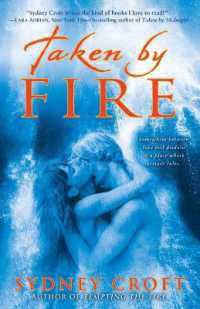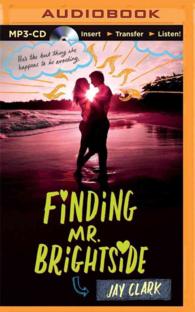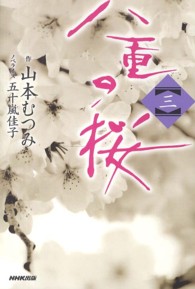- ホーム
- > 洋書
- > 英文書
- > Science / Mathematics
Full Description
During the twentieth century, many artists and writers turned to abstract mathematical ideas to help them realize their aesthetic ambitions. Man Ray, Marcel Duchamp, and, perhaps most famously, Piet Mondrian used principles of mathematics in their work. Was it mere coincidence, or were these artists simply following their instincts, which in turn were ruled by mathematical underpinnings, such as optimal solutions for filling a space? If math exists within visual art, can it be found within literary pursuits? In short, just what is the relationship between mathematics and the creative arts? In this provocative, original exploration of mathematical ideas in art and literature, Robert Tubbs argues that the links are much stronger than previously imagined and exceed both coincidence and commonality of purpose. Not only does he argue that mathematical ideas guided the aesthetic visions of many twentieth-century artists and writers, Tubbs further asserts that artists and writers used math in their creative processes even though they seemed to have no affinity for mathematical thinking.
In the end, Tubbs makes the case that art can be better appreciated when the math that inspired it is better understood. An insightful tour of the great masters of the last century and an argument that challenges long-held paradigms, Mathematics in Twentieth-Century Literature and Art will appeal to mathematicians, humanists, and artists, as well as instructors teaching the connections among math, literature, and art.
Contents
Preface
Chronology
1. Surrealist Writing, Mathematical Surfaces, and New Geometries
Mathematical Imagery and Images
Man Ray and Mathematical Surfaces
Geometries, Flat and Curved
2. Objects, Axioms, and Constraints
Black Squares and Axioms
Geometry without Objects / Literature without Words
3. Abstraction in Art, Literature, and Mathematics
The White Paintings
Abstract Numbers
Structure
4. Literature, the Möbius Strip, and Infinite Numbers
Concrete Art
The Möbius Strip and Literature
Concrete Mathematics and Infinite Numbers
5. Klein Forms and the Fourth Dimension
In the Labyrinth
Surfaces, Mysticism, and the Fourth Dimension
6. Paths, Graphs, and Texts
Literature and Choice
Mathematical Graph Theory
A Play Based on a Graph
7. Poetry, Permutations, and Zeckendorf's Theorem
Structured and Programmed Poems
Concrete Poetry and Mathematical Images
8. Numbers and Meaning
Targets, Numbers, and Equations
Numbers: Imagined and Imaginary
Randomness, Arbitrariness, and Perfect Numbers
Dada Poetry
Disorder and Art
Arbitrariness
10. The Artworld
Notes
Bibliography
Index








